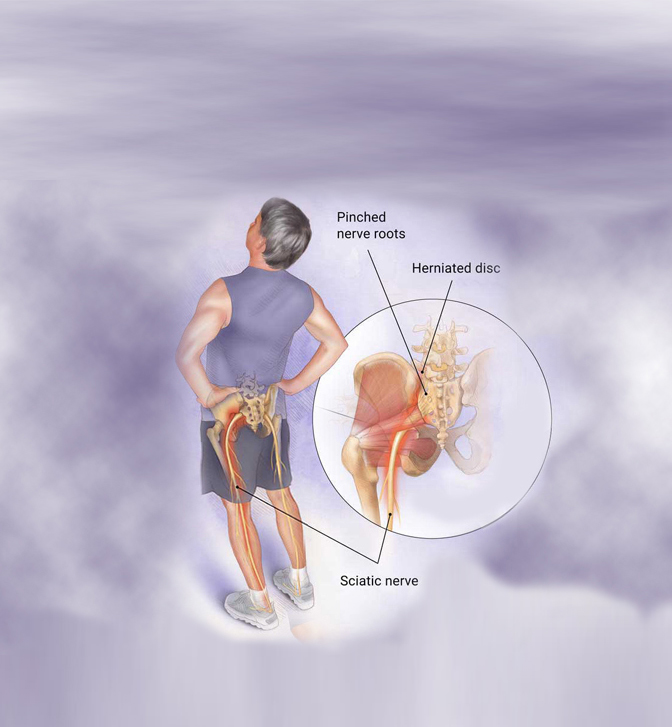HOW DO YOU KNOW IF YOU HAVE SCIATICA?
If you have sciatica, you probably already know that you have it!
The term sciatica typically means pain that runs down your leg – it can be a deep throb to a deep burn and is very debilitating. It can involve the entire leg or just the buttock. It can skip the thigh but be very intense in the calf. Typically, any movement is almost impossible and your life and work is definitely disrupted.
WHAT IS SCIATICA?
The sciatic nerve is the longest nerve in your body. It runs from your pelvis, through your hip area and buttocks and down each leg.
As with most conditions, the main symptoms indicate a deeper cause than the surface pain. The same is also true for sciatica. The worst case scenario is that you may have an injured disc. The level and severity of disc injuries vary. A swollen disc (the cause) can compress the nerve resulting in the pain (the symptom) radiating to the leg.
There also is the possibility that the piriformis muscle can be in spasm; therefore, compressing the nerve. This is generally the least severe and easier to correct cause of sciatica. As the nerve is compressed, numbness and tingling can occur.
In more severe cases, muscular weakness in the leg can occur which can make walking a nearly impossible task. Worst case scenario, the muscles of the leg deteriorate and surgery may be your only option at that time.

SCIATICA TREATMENT
Sciatica requires immediate attention.
Sciatica requires immediate attention from a physician that is professionally trained in the evaluation and treatment of a low back condition and sciatica. Special test and diagnostic studies are required in most cases to make an accurate diagnosis.
If an early evaluation and treatment are not handled properly, there is the possibility that a long standing health issue may arise.
Once a proper and accurate diagnosis is made, treatment can begin. Many times decompression therapy is the best option. These treatments are generally followed by exercise therapy as well as massage therapy to reduce the spasms. Specific stretching exercises, core strength and stabilization exercises through yoga are vitally important as well for best results.
If the condition continues to worsen, spinal injections and/or trigger point injection may be required.

Book a Comprehensive Evaluation Today
Call (407) 447-2273 or
Request an Appointment online
Access Integrated Primary Care is your one-stop shop for all your Health Care Needs.
Your content goes here. Edit or remove this text inline or in the module Content settings. You can also style every aspect of this content in the module Design settings and even apply custom CSS to this text in the module Advanced settings.
[et_bloom_inline optin_id="optin_1"]
